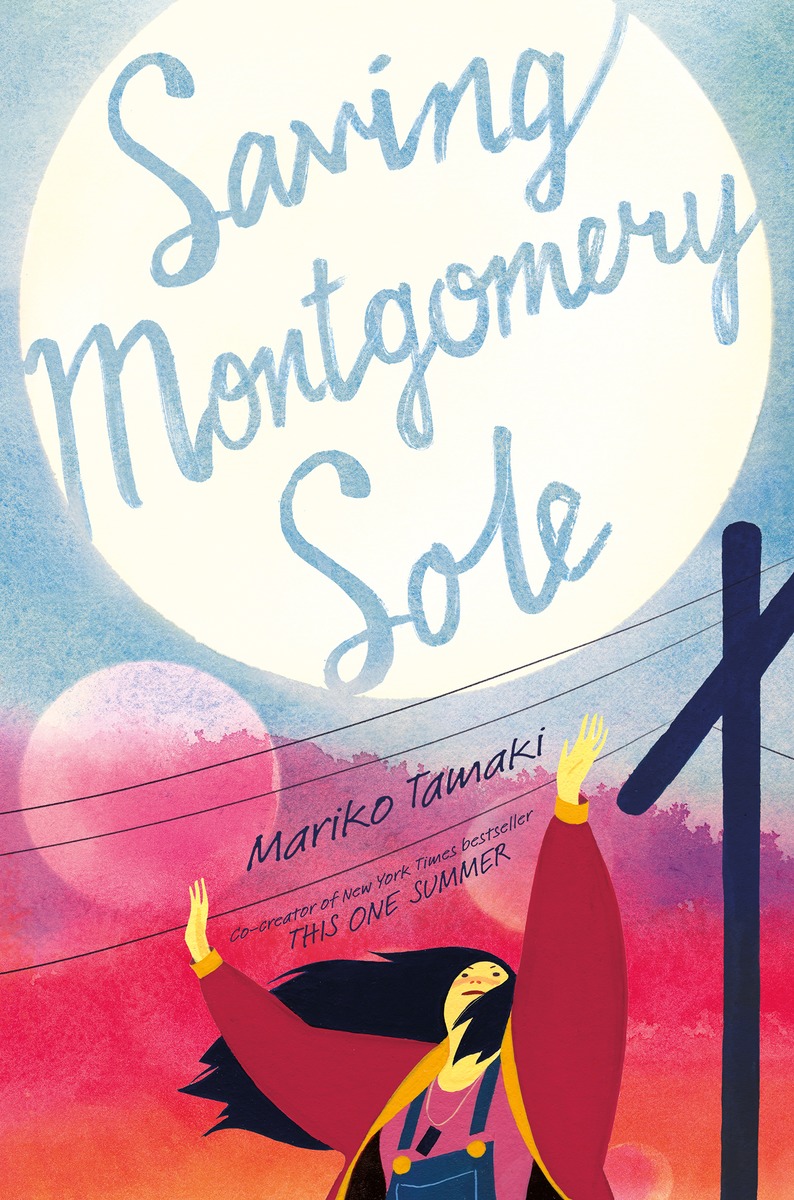| ________________
CM . . .
. Volume XXII Number 37. . . .May 27, 2016
excerpt:
Saving Montgomery Sole is a nuanced, honest exploration of prejudice that centers around a straight girl with lesbian parents and a gay best friend, Thomas. Monty is in high school in a small Californian town. She and her two friends, Thomas and Naoki, have a Mystery Club that explores unexplained phenomena like “black holes, telekinesis, or spontaneous combustion.” As part of her exploration, Monty buys a crystal amulet online called “The Eye of Know”. Monty, who doesn’t get along with most of the high school population who make snide comments about her parents and think she’s weird, spends most of her days feeling sullen and defensive; she doesn’t understand how Thomas can take the constant harassment he gets without getting angry. When Monty tries to tap into the power of the Eye of Know and an accident happens to someone who was being hurtful, she wonders if she caused the accident. Rather than being concerned that she might have power to hurt people, she decides to keep the stone and try to use it again. At the same time as a well-known anti-gay preacher and his family move into town, someone pastes crosses on everyone’s lockers at school. Monty assumes the preacher’s son, Kenneth, is responsible and takes an instant dislike to him, even though Kenneth hardly speaks to anyone. Naoki tries to convince Monty to let Kenneth join the Mystery Club, but she refuses. When she tells Thomas she’s afraid it might be her fault, he tells her to get rid of the stone. Monty decides both her friends are against her. She goes to confront Reverend White and discovers that there is no one at his anti-gay meeting. Then Kenneth chases her down and tells her he doesn’t agree with his father and he’s frustrated with the way everyone assumes things about him that aren’t true. Monty realizes she’s just as guilty of judging people and being prejudiced as anyone else. Once she acknowledges that her attitude and actions have been governed by fear, she is able reconcile with her friends and make overtures of friendship to Kenneth. Monty is a realistic, sympathetic character who makes mistakes and does some unpleasant things. Her journey to greater self-awareness is funny, heartbreaking and completely believable. Her friends and family are well-rounded, enjoyable characters, and Monty’s relationships with each of them are sensitively drawn. The mean girls came across a little one-sided, but they had a limited role in the story. Saving Montgomery Sole uses Monty’s Mystery Club to explore the idea of belief: the reasons people want to believe in something with more knowledge or power than themselves. The story equates prayer with wishing on a crystal and implies that Christianity is as valid as a belief in Ouija boards—it leaves open the possibility that anything might be true. The danger is only in the motivation of the believer.
Monty’s mothers, her sister, and her two friends are all examples to her of different ways of responding to prejudice, and throughout the novel, they model better strategies than Monty’s retreat into hostility.
There is a clear message in the book, but it never comes across as preachy because each character has their own reasons for they way they see the world, and Monty learns from her own experiences. Although the book specifically deals with prejudice against the LGBTQ community, teens feeling targeted for any reason will feel a kinship with Monty. Well-written and insightful, Saving Montgomery Sole is a worthwhile addition to a high-school library and will appeal to readers who like uncomfortably realistic characters and books that challenge their assumptions. Highly Recommended. Kim Aippersbach is a writer, editor and mother of three living in Vancouver, BC.
To comment
on this title or this review, send mail to cm@umanitoba.ca.
Copyright © the Manitoba Library Association. Reproduction for personal
use is permitted only if this copyright notice is maintained. Any
other reproduction is prohibited without permission.
Next Review |
Table of Contents for This Issue
- May 27, 2016. |
